


















































































































































At the end of April 2018 a proposal was submitted for the Maintal art competition. In front of the Bürgerhaus (Citizens’ Centre) in Bischofsheim, part of the municipality of Maintal near Frankfurt, an art object is planned on the theme of encounter. Accordingly, “Begegnung” (Encounter) was the title of the submission.
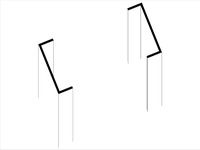
the basic elements
of the object
18-07-001
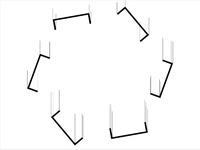
of the whole object
18-07-002
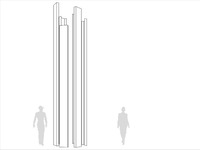
of the whole object
18-07-003
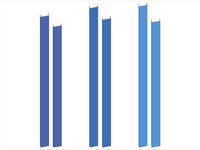
of the stelae
in shades of blue
18-07-004
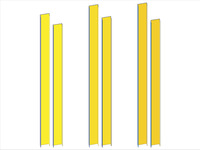
of the stelae
in shades of yellow
18-07-005
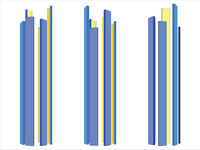
various directions
18-07-006
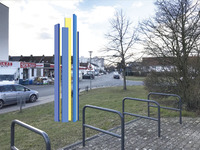
of the object in situ
18-07-007
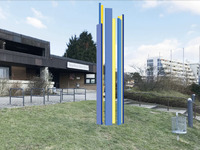
of the object in situ
18-07-008
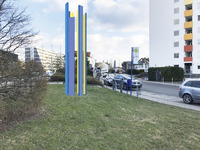
of the object in situ
18-07-009
Explanatory Report:
Encounter means not passing by one another but moving towards one another. Encounter pre-supposes an attitude, the attitude of willingness, of opening up, of turning to one another. Such an attitude can be represented. By means of a strongly reduced, simple, clear form: by an open rectangle with two sides pointing into the open space, like open arms. This form is the basic element of the concept.
As soon as the basic elements approach each other, the representation becomes complete. The rectangles point to one another with their openings. They correspond to and communicate with one another. The basic elements form a unity. Although they are clearly recognisable as two distinct shapes and although they may be placed at a considerable distance, they nonetheless belong together. Their semantic meaning and their gestures place them in a relationship in which we perceive unity: a unity that speaks. At first the unity of two basic elements is an abstract entity, a pure image. This abstract entity becomes a concrete entity, a tangible object. Pre-fabricated steel profiles serve to provide the form and colours. The basic elements are now no longer pure forms floating in an abstract visual space. They become solid stelae that have their own material reality. The basic elements are no longer placed opposite each other – they stand face to face. They are actors in the space and thus form their own space for encounter.
The stelae join to make pairs. Three pairs make up a ring. As their axes are mutually displaced, the stelae, which stand opposite each other in pairs, have not yet found unity. They are still searching for their final relationship. In this way, encounter is represented not as a result and a state of affairs but as a moving process. The unity of the pairs is already implied formally but has not yet been consummated. The whole ring is in a state of dynamic rotation. Encounter is a living thing. The ring of encounters, consisting of steel profiles in the shape of stelae, forms a tall object that has a striking effect from some distance away. The stelae vary in height so that, instead of a compact, dominant whole, the individual elements have a life of their own. What is important is not one entity but above all many, which come together for their encounter.
The distances between the stelae are arranged so that adults, too, can pass between them and can walk through the space of encounter. For children they are an attractive place to play that invites them to play hide-and-seek. The stelae are up to 6.80 m tall, 40 cm wide and 11.5 cm thick. The diameter of the entire object is 1.60 m, and the stelae stand approximately 35 cm apart.
The inside and the outside form a contrast to the whole object, which encloses a space for encounter. The outside and inside also determine the character of the steel profiles. This contrast is underlined and enhanced in meaning by the colour. The outside is represented by blue, the colour of the sky, of opening and of freedom, but also of the night. The inside is represented by yellow, the colour of light, of warmth, of shelter. Thus all who enter the interior of the object experience something like a space of light. The fact that it is possible to enter the object therefore leads to an impressive experience of colour. The two colours, blue for the outside and yellow for the inside, are differentiated, so that each pair of stelae appears in a different colour nuance. The individuality of the elements, already suggested by their size, is confirmed by the shades of colour. On the other hand, the use of the same colour reinforces the fact that the stelae of a pair belong together.
As a walk-through object, “Begegnung” is permeable. As it gives access to the interior, it also creates lines of viewing through the object. These lines of view change as viewers change their position. At the same time, the sequence of colours and the arrangement of the stelae change. Thus the object provides a cinematic dimension for all viewers who walk past the object.












































































































































